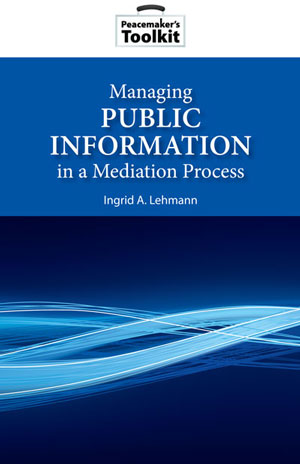- by Ingrid Lehmann
Introduction
Many diplomats and others involved in the mediation of international conflicts tend to be reluctant to publicize details of their work and may prefer to stay entirely out of the media’s limelight. While this approach has its merits during some negotiations, particularly in the early stages, in today’s 24/7 information environment nothing stays confidential for long. It only is a matter of time before information leaks, sometimes at the initiative of the parties themselves. Increasingly, mediators find that an active media strategy becomes an essential element of their work. Such a public-information strategy will aim to build public support for the peace process, shape the public image of the international negotiator and avoid negative fallout from uncontrolled and misleading public exposure.
In 21st-century conflicts, there are not only professional reporters covering a conflict or emerging crisis, but countless interested observers. Some may be citizens ‘bearing witness’, who can create a ‘story’ through a short message, photo or video posted on the internet. Such news items can be picked up by the traditional media and may rapidly take on a life of their own. (1) For mediators it thus becomes vital to monitor relevant information channels and attempt to manage the news flow about their work in a proactive way. Seeking the ‘information high ground’, as in defining and enunciating the basic issues in the negotiations and avoiding unnecessary and contentious details, ought to become one of the goals of all active mediators.

